
Riso Room
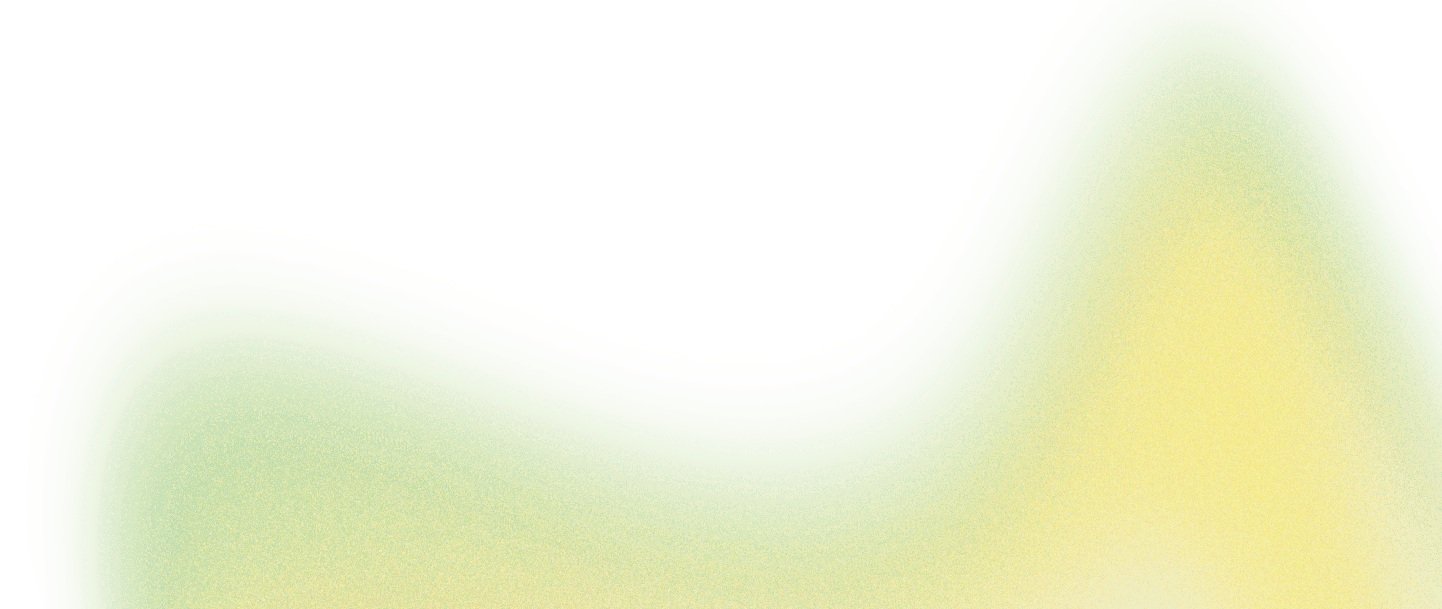
Open to all students
The Risograph is is located in the Rad Lab for your use. Riso Fellows (chosen each term), will print your jobs, which you can pay for with PSU print credits (the same you use for the other Rad Lab printers).
Monday
1:00pm-4:00pm
Alice
6:00pm-7:00pm
Bridger
Tuesday
12:00pm-3:00pm
Jordan D
Wednesday
10:00am-1:00pm
Olivia
6:00pm-8:00pm
Madison & Bridger
Thursday
8:00am-10:00am
Lyndsey Z
2:00pm-5:00pm
Sara Ray
The Riso Room is closed all days the university is closed. See academic calendar here.
Follow us @psugd_riso
* *
Follow us @psugd_riso * *
Meet Flo, our resident riso!
A little lady with some spunk—and an attitude to match, Flo will serve up some great prints and Rad Lab memories for you, calling you ‘doll’ and ‘sweetie’ along the way (albeit, passive-aggressively, sometimes)! Flo is here to help with your printing needs! As long as you can deal with a paper jam or two along the way!
-
The Risograph printer, is based on the stencil method of printing, much like screen printing. While the machine looks very much like a photocopier, it functions quite differently. Black & white artwork is sent to the Riso either from the connected desktop pc, or on the scanned on top of the machine. The image is ‘burnt’ on to a paper-like master, which can then be used to duplicate it up to thousands of times. The master wraps automatically around an ink drum. The ink is pushed through the screen/master, and then prints onto paper that makes contact with the drum.
-
There are various reasons, but perhaps the biggest one is that the Risograph allows you to print with ink colors that digital printers simply cannot achieve—rich blues, fluorescents and more.
The Risograph also allows you to explore printing in a more basic sense, as it requires you to print each color individually. This allows for exciting overprinting possibilities as well as unexpected ‘happy accidents’.
-
Please read this RisoGuide for a quick start on preparing to print. For a more in depth look, review this Risograph_Intro_Presentation prepared about the Risograph. This handy app, Spectrolite, helps you separate colors (great if you are printing a photograph in more than one color) and do other things like preview your job.
Available colors
Fluorescent Pink
Fluorescent Orange
Red
Misty Grey
Sunflower Orange
Yellow
Cornflower Blue
Indigo Blue
Green
Black
Interested in learning more?
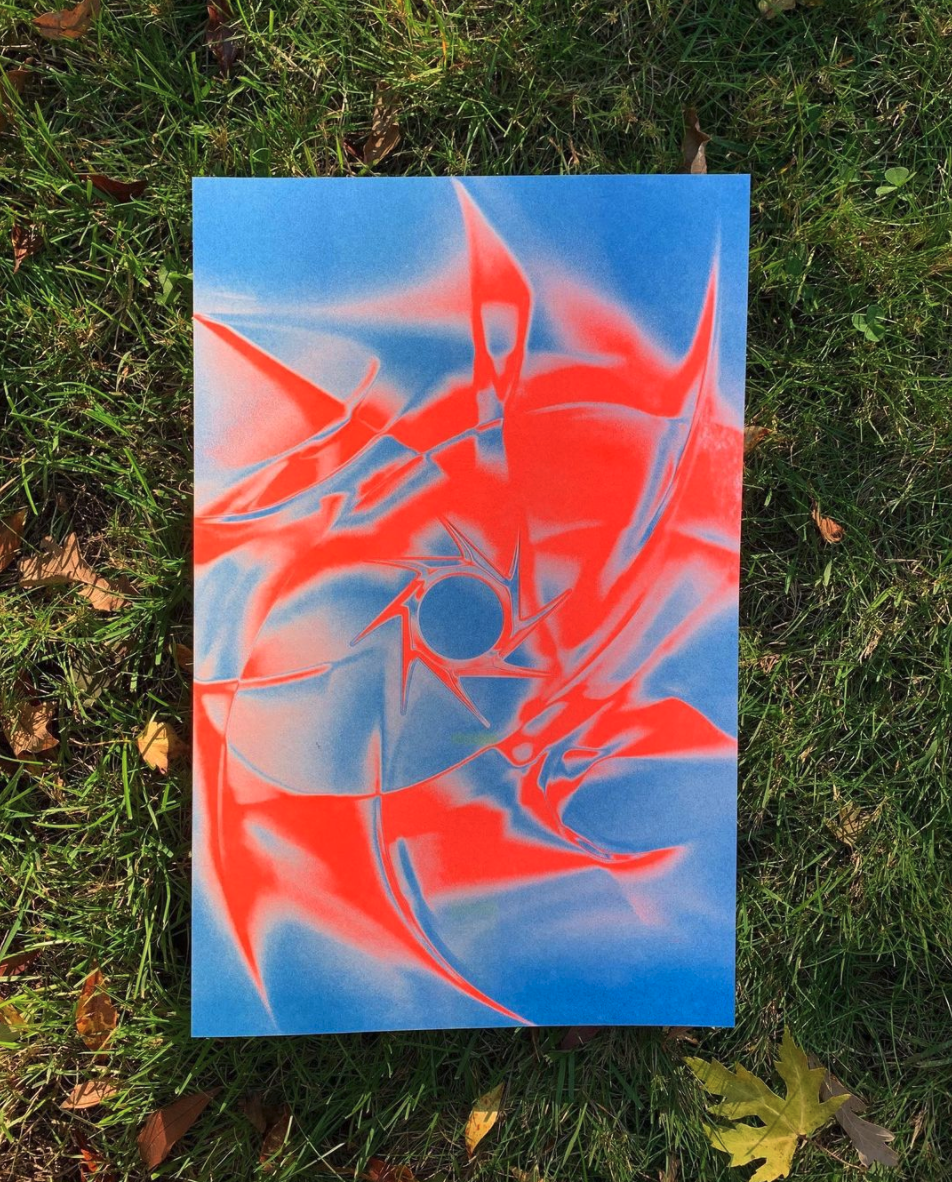
Brandon Braun
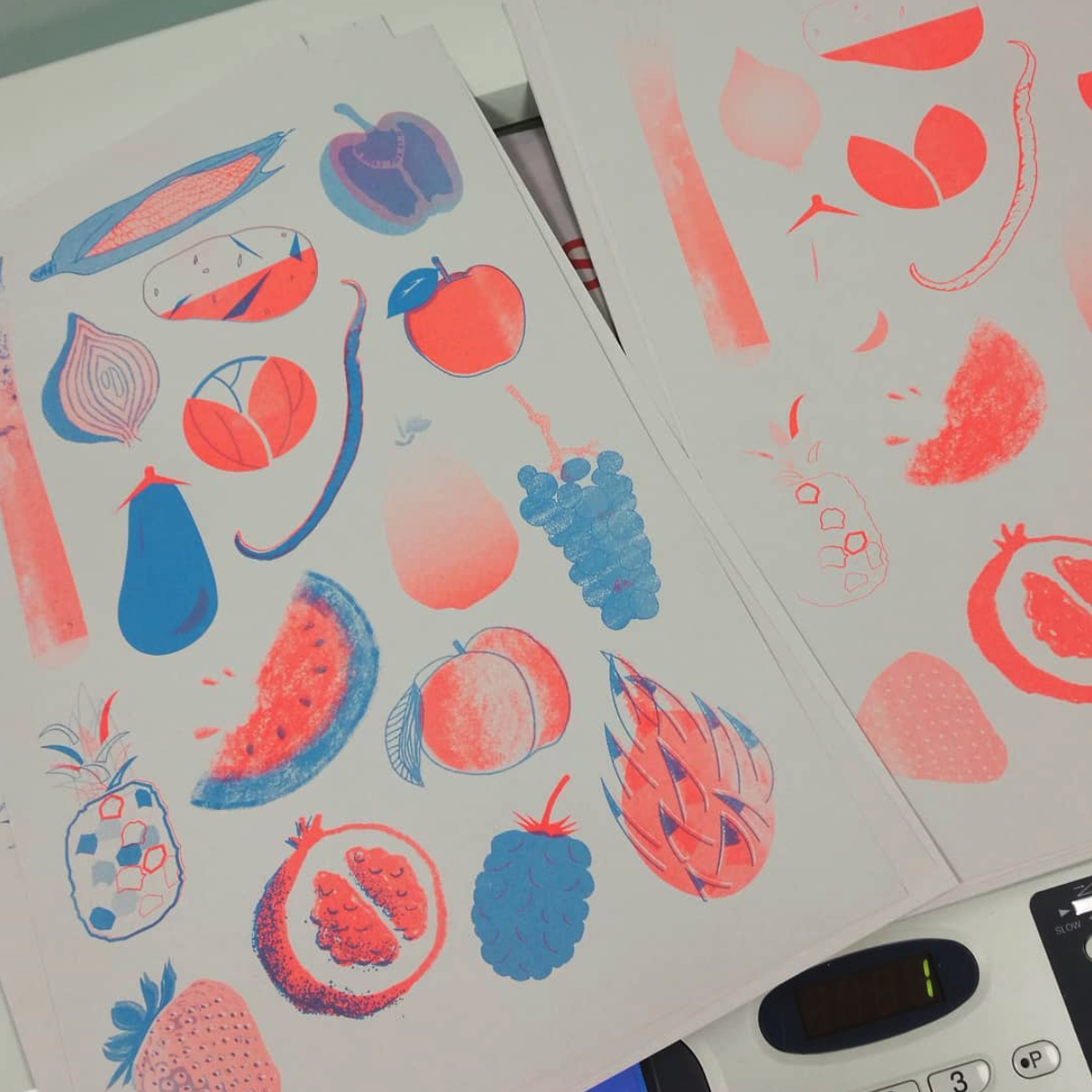
Cassandra Swan’s 210 class

Conrad Crespin
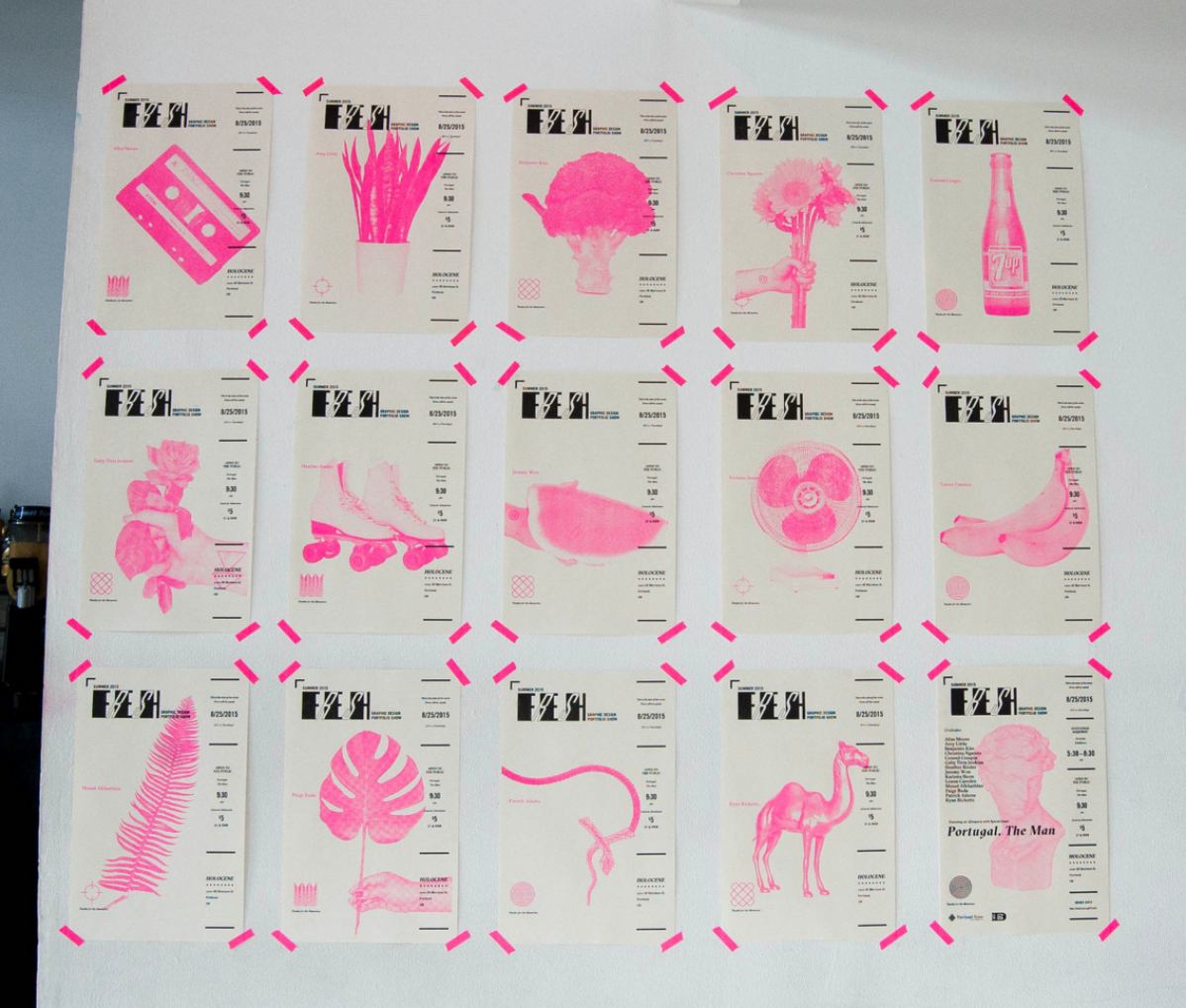
Patrick Adams (with his 472 class)
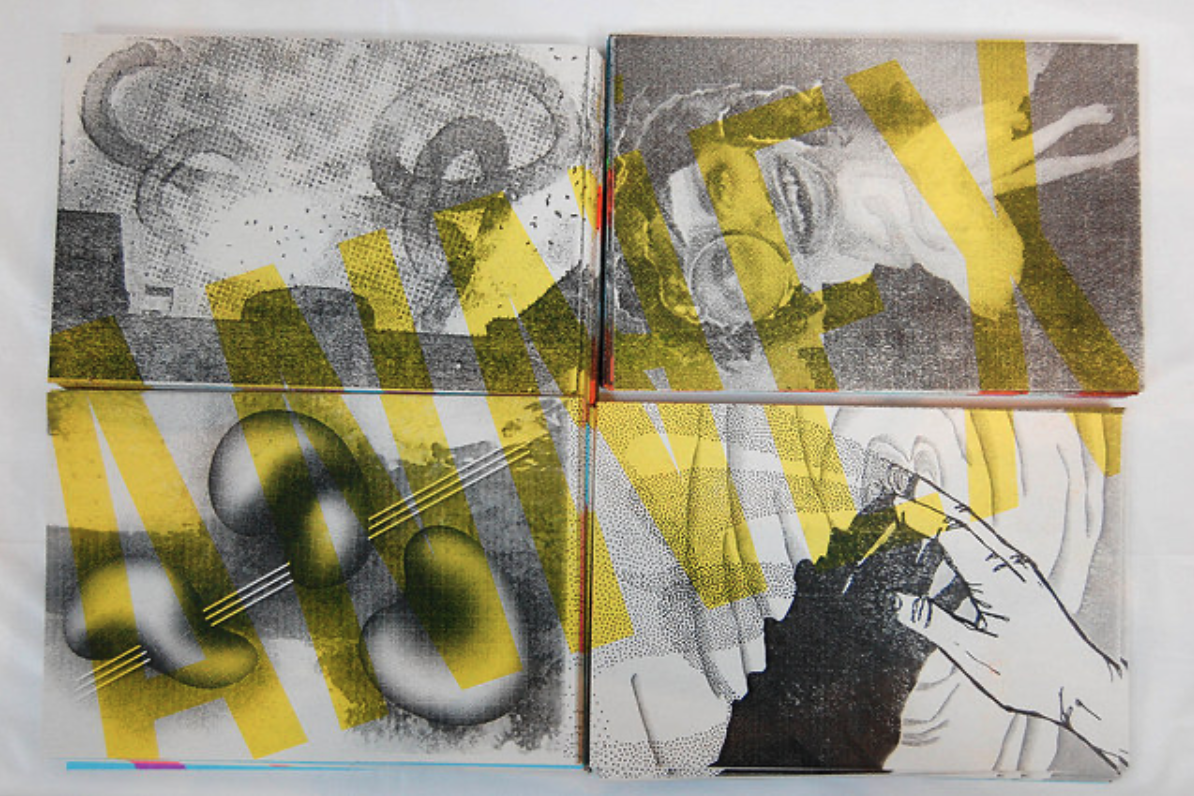
Rico Macias-Zapeda, Conrad Crespin, & Hunter Sharp

Sol Cejas

Past Riso Fellows
Spring ‘23
Karina Benjamin
Leigh Annand
Reed Le
Angela Nguyen
Tiana Low
Winter ‘22
Tye Raymond
Wes Gibson
Maria Wehdeking
Winter ‘19
Zak Stone
Emily Rask
Kami Gould
Winter ‘23
Monday Heyl
Noah Brown
Em Craig
Fall ‘17
Chloe Kendall
Morgan Marshall
Leland Vaughan
Fall ‘21
Steph Bianco
Emiri Nakagawa
Paris Fox
Fall ‘18
Walton Bush
Sydney Dolzine
Kelsie Wells
Spring ‘17
Nic Meier
Maggie Denham
Spring ‘22
Simone Gee
Gage Murray
Monday Miller
Spring ‘18
Whitney Mokler
Shea Satterlee
Sarah Nason
Winter ‘20
Kelsey Stewart
Andrew Gilbert
Corinne O’Conner
Winter ‘17
Rosie Struve
Violet Reed
Fall ‘22
Caryn Asness
Sophia Mick
Hlie Moua
Fall ‘23
Sophia Mick
Bri Cieri
Zahira Zuvuya
Arya Thompson
Angela Nguyen
Jordan Divers
Fall ‘19
Sol Duncan
Leah Maldonado
Nia Musiba
Winter ‘18
Ella Higgins
Billy Corona
Lisa Kohn
Fall ‘16
James Casey
Ciera Tague












